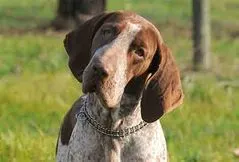
Harrier
The harrier is a smaller version of the English foxhound, more suited for hunting hares. He’s sweet and affectionate, but also highly energetic.
Overall Status
| Height | 18 to 22 inches at the shoulder |
| Temperament | Friendly, Outgoing, People-Oriented |
| Weight | 40 to 60 pounds |
| Life Expectancy | 12 to 15 years |
| Coat Color | Black, White & Tan, Lemon & White, Red & White |
| Barking Level | Frequent |
Quick Factors
| Playfulness | |
| Dog Friendly | |
| Exercise Need | |
| Grooming Needs | |
| Strangers Friendly | |
| Family Affectionate |
Daily Care
Grooming Tips
The Harrier’s short, dense coat is easy to groom. Brush it weekly with a hound mitt or rubber curry brush to remove dead hairs and distribute skin oils. The dogs shed moderately, and regular brushing will help prevent loose hairs from settling on your floors, furniture and clothing. Bathe the dog as needed.The rest is basic care. Trim the nails every week or two. Keep the rounded hanging ears clean and dry, and brush the teeth with a vet-approved pet toothpaste for good overall health and fresh breath.
Exercise Tips
The Harrier is a hound and he was bred to chase and hunt hares and foxes.This breed requires at least an hour’s worth of high energy exercise daily. Harriers love to go on runs, go hiking or simply tear up the grass in the backyard running and chasing things outside of the fence.Harriers love to play so families with kids will be thrilled. Fetch, catch, and tag are their favorite games. Of course, a fenced yard is necessary to keep the dog safe and allow him to get the exercise he needs to stay healthy and happy.
Feeding Tips
Harriers are high-energy dogs and they need a quality diet specifically designed to meet their nutritional needs. Dental problems can occur if Harriers are primarily fed a diet of wet, canned food. It is best to feed dry kibble. This will cut down on the risk of cavities, gum infections and overall bad breath.
Health Tips
Harriers are really healthy dogs and the only major issue with the breed is hip dysplasia. Reputable breeders work diligently to ensure that their breeding stock is free from this genetic problem hence; the incidence of hip dysplasia in Harriers is on the decline. This is a good thing as hip dysplasia can cripple a dog and lead to expensive veterinary bills as well as pain for the dog.
Trainability
Although rather intelligent, the Harrier can be a stubborn dog. He will easily learn commands while hunting in the field however; when it comes to learning household commands, it can be problematic.Bits of cooked meat and a calm yet firm manner will help make training the Harrier easier. Short and repetitive lessons will prove to be more effective than long ones.
History
While the exact origins are not clear, the Harrier is believed to have been bred down in size from theEnglish Foxhound. While smaller than the Foxhound, it is larger than theBeagle.The breed has existed in America since Colonial times. The breed was developed primarily to hunt hare, hence the name, and can also do well with the fox.The dogs became popular in England due to their slower pace; hunters were able to keep up with them on foot. The dogs had superior stamina in the field, with excellent noses. The breed is more popular in England working in packs, and is still rare in the USA. The Harrier was recognized by the AKC in 1885.






